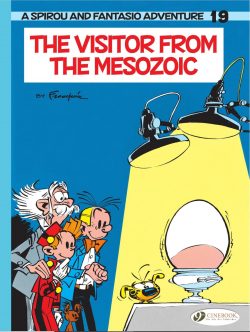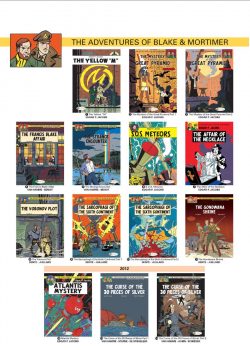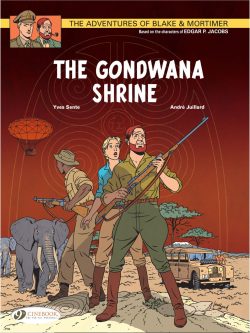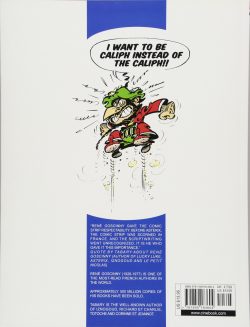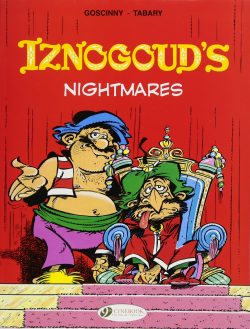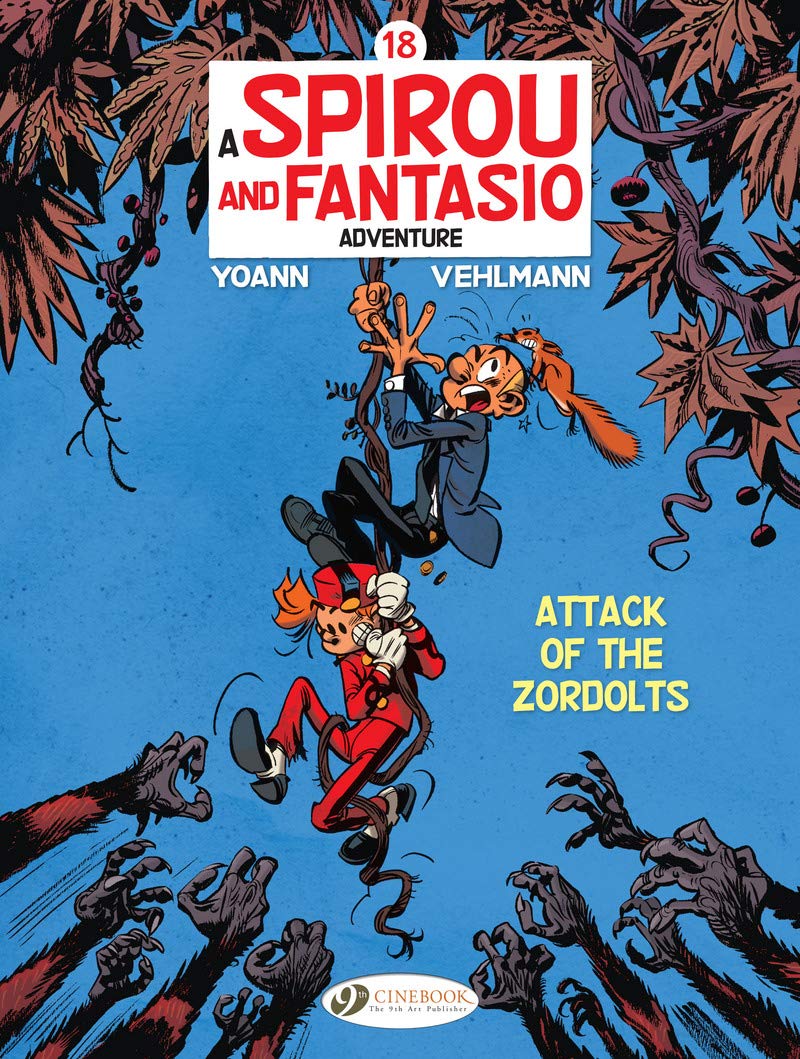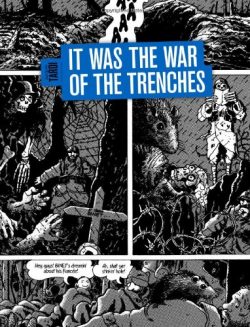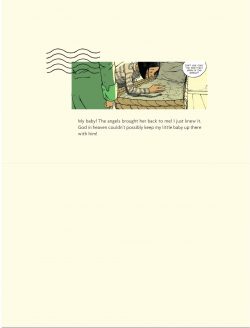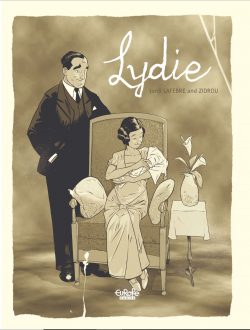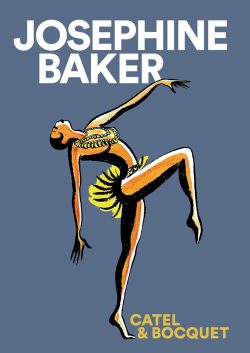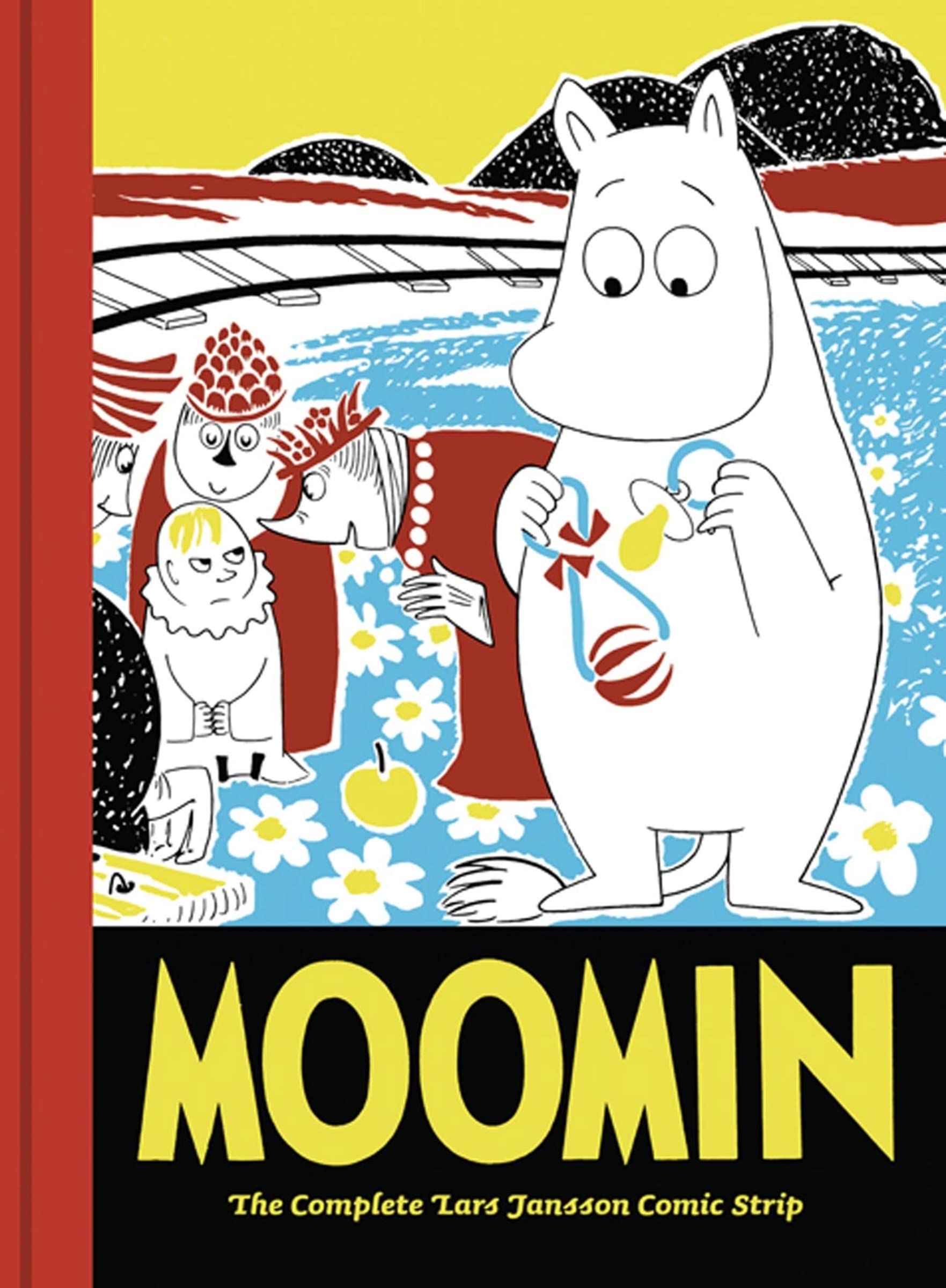
By Lars Jansson (Drawn & Quarterly)
ISBN: 978-1-77046-042-3 (HB) eISBN: 978-1-77046-553-4
Win’s Christmas Gift Recommendation: Enchanting Entertainment… 9/10
Tove Jansson was one of the greatest literary innovators and narrative pioneers of the 20th century: equally adept at shaping words and images to create worlds of wonder. She was especially expressive with basic components like pen and ink, manipulating slim economical lines and patterns to realise sublime realms of fascination, whilst her dexterity made simple forms into incredibly expressive and potent symbols and as this collection shows, so was her brother…
Tove Marika Jansson was born into an artistic, intellectual and rather bohemian Swedish family in Helsinki, Finland on August 9th 1914. Father Viktor was a sculptor and mother Signe Hammarsten-Jansson a successful illustrator, graphic designer and commercial artist. Tove’s brothers Lars – AKA “Lasse” – and Per Olov became – respectively – an author/cartoonist and art photographer. The family and its close intellectual, eccentric circle of friends seems to have been cast rather than born, with a witty play or challenging sitcom as the piece they were all destined to inhabit.
After extensive and intensive study (from 1930-1938 at the University College of Arts, Crafts and Design, Stockholm, the Graphic School of the Finnish Academy of Fine Arts and L’Ecole d’Adrien Holy and L’Ecole des Beaux-Arts, Paris), Tove became a successful exhibiting artist through the troubled period of the Second World War.
Brilliantly creative across many fields, she published the first fantastic Moomins adventure in 1945. Småtrollen och den stora översvämningen (The Little Trolls and the Great Flood or latterly and more euphoniously The Moomins and the Great Flood) was a whimsical epic of gentle, inclusive, accepting, understanding, bohemian misfit trolls and their strange friends…
A youthful over-achiever, from 1930-1953 Tove had worked as an illustrator and cartoonist for the Swedish satirical magazine Garm: achieving some measure of notoriety with an infamous political sketch of Hitler in nappies that lampooned the Appeasement policies of European leaders in the build-up to WWII. She was also an in-demand illustrator for many magazines and children’s books, and had started selling comic strips as early as 1929.
Moomintroll was her signature character. Literally.
The lumpy, gently adventurous big-eyed romantic goof began life as a spindly sigil next to her name in her political works. She called him “Snork” and claimed she had designed him in a fit of pique as a child – the ugliest thing a precocious little girl could imagine – as a response to losing an argument with her brother about Immanuel Kant.
The term “Moomin” came from her maternal uncle Einar Hammarsten who attempted to stop her pilfering food when she visited, warning her that a Moomintroll guarded the kitchen, creeping up on trespassers and breathing cold air down their necks. Snork/Moomin filled out, became timidly nicer – if a little clingy and insecure – acting as a placid therapy-tool to counteract the grimness of the post-war world.
The Moomins and the Great Flood didn’t make much of an initial impact but Jansson persisted, probably as much for her own edification as any other reason, and in 1946 second book Kometjakten (Comet in Moominland) was published. Many commentators have reckoned the terrifying tale a skilfully compelling allegory of Nuclear Armageddon. You should read it now… while you still can…
When it and third illustrated novel Trollkarlens hatt (1948, Finn Family Moomintroll or occasionally The Happy Moomins) were translated into English in 1952 to great acclaim, it prompted British publishing giant Associated Press to commission a newspaper strip about her seductively sweet and sensibly surreal creations.
Jansson had no misgivings or prejudices about strip cartoons and had already adapted Comet in Moominland for Swedish/Finnish paper Ny Tid. Mumintrollet och jordens undergäng – Moomintrolls and the End of the World – was a popular feature so Jansson readily accepted the chance to extend her eclectic family across the world. In 1953, The London Evening News began the first of 21 Moomin strip sagas which promptly captivated readers of all ages. Jansson’s involvement in the cartoon feature ended in 1959, a casualty of its own success and a punishing publication schedule. So great was the strain that towards the end she recruited brother Lars to help. He took over, continuing the feature until its end in 1975. His tenure as sole creator officially starts here…
Liberated from the strip’s pressures, Tove returned to painting, writing and other creative pursuits: generating plays, murals, public art, stage designs, costumes for dramas and ballets, a Moomin opera and 9 more Moomin-related picture-books and novels, as well as 13 books and short-story collections strictly for grown-ups.
Tove Jansson died on June 27th 2001. Her awards are too numerous to mention, but just think: how many modern artists get their faces on the national currency?
Lars Fredrik Jansson (October 8th 1926 – July 31st 2000) was just as amazing as his sister. Born into that astounding clan twelve years after Tove, at 16 he started writing – and selling – his novels (nine in total). He also taught himself English because there weren’t enough Swedish-language translations of books available for his voracious reading appetite.
In 1956, he began co-scripting the Moomin newspaper strip at his sister’s request: injecting his own brand of witty whimsicality to ‘Moomin Goes Wild West’. He had been Tove’s translator from the start, seamlessly converting her Swedish text into English. When her contract with The London Evening News expired in 1959, Lars Jansson officially took over the feature, having spent the interim period learning to draw and perfectly mimic his sister’s cartooning style. He had done so in secret, with the assistance and tutelage of their mother Signe Hammarsten-Jansson, and from 1961 to the strip’s end in 1974 was sole steersman of the newspaper iteration of trollish tails.
Lasse was also a man of many parts: his other careers including writer, translator, aerial photographer and professional gold miner. He was the basis and model for cool kid Snufkin…
Lars’ Moomins was subtly sharper than his sister’s version and he was far more in tune with the quirky British sense of humour, but his whimsy and wry sense of wonder was every bit as compelling. In 1990, long after the original series, he began a new career, working with Dennis Livson (designer of Finland’s acclaimed theme park Moomin World) as producers of Japanese anime series The Moomins and – in 1993 with daughter Sophia Jansson – on new Moomin strips…
Moomintrolls are easy-going free spirits: modern bohemians untroubled by hidebound domestic mores and most societal pressures. Moominmama is warm, kindly tolerant and capable but perhaps overly concerned with propriety and appearances whilst devoted husband Moominpappa spends most of his time trying to rekindle his adventurous youth or dreaming of fantastic journeys.
Their son Moomin is a meek, dreamy boy with confusing ambitions. He adores their permanent houseguest the Snorkmaiden – although that impressionable, flighty gamin prefers to play things slowly whilst waiting for somebody potentially better…
The 6th oversized (310 x 221 mm) monochrome hardback compilation gathers serial strip sagas #22-25 and is a particular favourite, and opens with Lars firmly in charge and puckishly re-exploring human frailties and foibles via a beloved old plot after a seaside excursion with the Snorkmaiden unearths ‘Moomin’s Lamp’…
Of course, the ancient artefact comes with its own rather lazy and inept genie, and when the glamour-crazed Snorkmaiden foolishly wishes for a diamond diadem despite her beau’s best advice, it triggers a bold theft and a great deal of difficulties with the local constabulary…
Soon, fugitives from the law and justice – definitely two different things here – the young malefactors have compromised the honour of overprotective Moominpapa and gone off to hide in the leafy wooded “Badlands” of Moomin Valley, enduring privation on the run until scurrilous reprobate Stinky “nobly” takes the offending lamp off their hands…
The perils of unrelenting progress and growth then manifest in ‘Moomin and the Railway’ when a bunch of burly but affable and unflappable workmen begin laying railroad tracks through the unspoiled beauty of Moomin Valley. Enraged and outraged, our young hero begins a campaign of resistance that includes persuasion, intimidation and even sabotage. Sadly, many of his initial allies turn at the prospect of increased ease, newfound affluence and plain old indifference, before incorrigible rebel Snufkin takes a hand and salvation suddenly comes in a strange form with the valley saved yet changed forever…
Contemporary Cold War concerns are then lampooned when the patriarch meets up with old school chum in ‘Moominpapa and the Spies’. Lost in a nostalgic haze with old crony Wimsy and hankering to recapture the wild and free, glory days of youth, the happy fantasist embarks on a misguided spree bound to disappoint and stumbles into an actual spy plot involving the worst operatives in the world. Ultimately Moominpapa is shanghaied and lost at sea before regaining his equilibrium and heading home again…
The weird wonderments conclude for now with another wry retort to fads and fashions as ‘Moomin and the Circus’ sees the Finn Family of trolls forced into vegetarianism when animal conservation captivates the entire valley. When Moominpapa is – most reluctantly – elected leader of the local Society for the Prevention of Cruelty to Animals, he resolves to lead by example, and his edicts quickly show up the hypocrisy of the fashion-conscious elite who pressganged him. Everybody gets an even more urgent chance to rethink their priorities and intentions after the SPCA forces the closure of a travelling show and then has to deal with the consequences: homing the Lions, horses, elephant, ostrich, monkeys, parrots, and sea-lions who were only really happy in show biz…
This compilation closes with ‘Lars Jansson: Roll Up Your Sleeves and Get to Work’ by family biographer Juhani Tolvanen, extolling his many worthy attributes…
These are truly magical tales for the young, laced with the devastating observation and razor-sharp mature wit which enhances and elevates only the greatest kids’ stories into classics of literature. These volumes – both Tove and Lars’ – are an international treasure trove no fan of the medium – or carbon-based lifeform with even a hint of heart and soul – can afford to be without.
© 2011 Solo/Bulls. “Lars Jansson: Roll Up Your Sleeves and Get to Work” © 2011 Juhani Tolvanen. All rights reserved.


